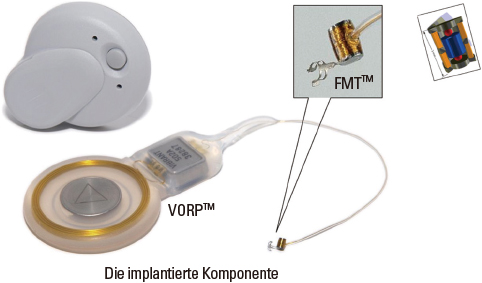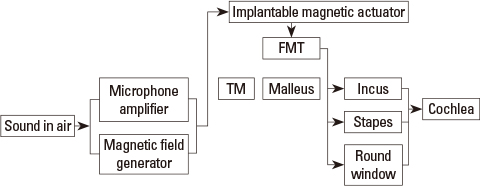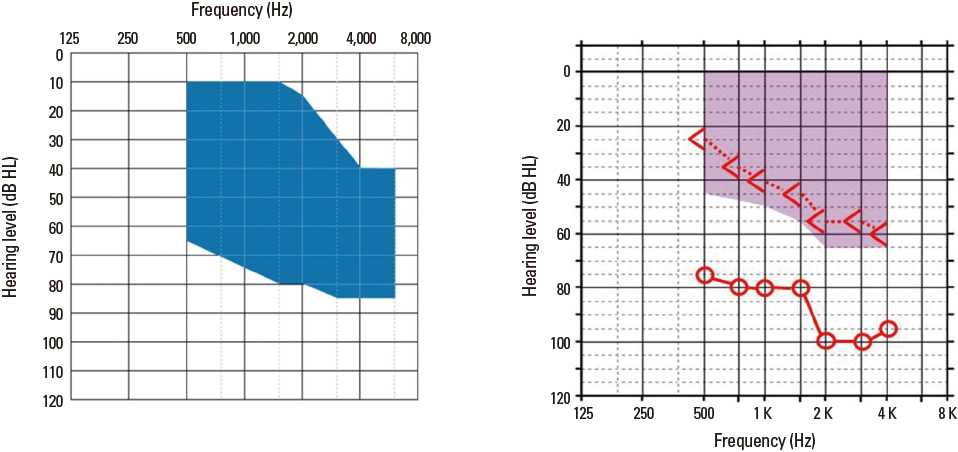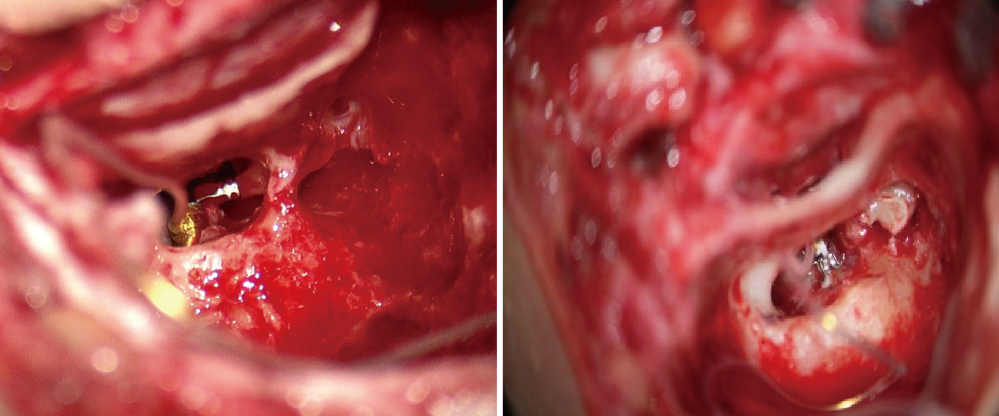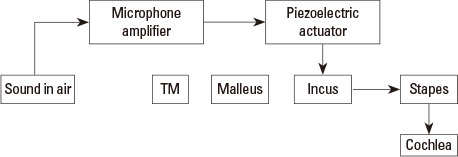Hanyang Med Rev.
2015 May;35(2):103-107. 10.7599/hmr.2015.35.2.103.
Middle Ear Implant
- Affiliations
-
- 1Department of Otorhinolaryngology-Head and Neck Surgery, Yonsei University College of Medicine, Seoul, Korea. jychoi@yuhs.ac
- KMID: 1793739
- DOI: http://doi.org/10.7599/hmr.2015.35.2.103
Abstract
- Patients with hearing loss have been increasing according to the extension of lifespan. Recently, new technology which solves the limitation of conventional hearing aids has been developed. For example, the active middle ear implantation which can directly transfer the vibration energy to the ossicles and inner ear fluid can avoid the feedback and occlusion effect, because this device uses the electromagnetic transducer, not a microphone. Active middle ear implants give more clear sounds and more gain in high frequency area. This device can apply to the patients with ski-sloping hearing loss and severe mixed hearing loss. In the paper, we reviewed the benefits and ideal candidates of the middle ear implant.
Keyword
MeSH Terms
Figure
Cited by 2 articles
-
Etiology and Rehabilitation of Sensorineural Hearing Loss
Seung Hwan Lee
Hanyang Med Rev. 2015;35(2):55-56. doi: 10.7599/hmr.2015.35.2.55.Comparison of the Effects of Middle Ear Implants and Conventional Hearing Aids on Cognitive Function
Choon Dong Kim, Hyun Sang Cho, Young Soon Yang, Hun Hee Baek, Sung Hwan Lim, Hye Mi Park, Ga Eul Choi, Eun Joo Choi, Shin Ae Kim
Korean J Otorhinolaryngol-Head Neck Surg. 2017;60(12):633-639. doi: 10.3342/kjorl-hns.2017.00612.
Reference
-
1. Rutschmann J. Magnetic audition-auditory stimulation by means of alternating magnetic fields acting on a permanent magnet fixed to the eardrum. IRE Trans Med Electron. 1959; 7:22–23.2. Yanagihara N, Sato H, Hinohira Y, Gyo K, Hori K. Long-term results using a piezoelectric semi-implantable middle ear hearing device: the Rion Device E-type. Otolaryngol Clin North Am. 2001; 34:389–400.
Article3. Hough JV, Matthews P, Wood MW, Dyer RK Jr. Middle ear electromagnetic semi-implantable hearing device: results of the phase II SOUNDTEC direct system clinical trial. Otol Neurotol. 2002; 23:895–903.4. Silverstein H, Atkins J, Thompson JH Jr, Gilman N. Experience with the SOUNDTEC implantable hearing aid. Otol Neurotol. 2005; 26:211–217.
Article5. Snik A, Moulder J, Cremers C, Noten J. Middle ear implants: patients' satisfaction. 9th International Conference on Cochlear Implants. Wien Med Wochenschr Suppl. 2006; 156:81.6. Linder T, Schlegel C, DeMin N, van der Westhuizen S. Active middle ear implants in patients undergoing subtotal petrosectomy: new application for the Vibrant Soundbridge device and its implication for lateral cranium base surgery. Otol Neurotol. 2009; 30:41–47.
Article7. Jenkins HA, Atkins JS, Horlbeck D, Hoffer ME, Balough B, Arigo JV, et al. U.S. Phase I preliminary results of use of the Otologics MET Fully-Implantable Ossicular Stimulator. Otolaryngol Head Neck Surg. 2007; 137:206–212.
Article8. Zenner HP, Rodriguez Jorge J. Totally implantable active middle ear implants: ten years' experience at the University of Tubingen. Adv Otorhinolaryngol. 2010; 69:72–84.9. Lefebvre PP, Martin C, Dubreuil C, Decat M, Yazbeck A, Kasic J, et al. A pilot study of the safety and performance of the Otologics fully implantable hearing device: transducing sounds via the round window membrane to the inner ear. Audiol Neurootol. 2009; 14:172–180.
Article10. Kam AC, Sung JK, Yu JK, Tong MC. Clinical evaluation of a fully implantable hearing device in six patients with mixed and sensorineural hearing loss: our experience. Clin Otolaryngol. 2012; 37:240–244.
Article


